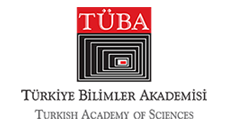Territorial and Geographical Commonalties: Mediterranean Sea and Its Coastlines

Territorial and Geographical Commonalties: Mediterranean Sea and Its Coastlines
In the Serbo-Croatian or Montenegrin language, the term sloj (layer) refers to a quantity of material covering a surface, or which is located between other surfaces. In this case, when discussing territorial, geographical, and other similarities, I believe that the second meaning can be applied: the surface (row) that lies between other surfaces (rows).
This is the case of modern Montenegro, a small country between the East and the West, the Mediterranean and the continental part of the Balkan Peninsula, in a word ‒ the case of several layers. The case of various rows, of matter and spirit, which can be found among other, similar, or even identical, rows. What is Boka Kotorska Bay, which saw all civilizations and is popularly called just Boka, which in Spanish means mouth, but a layer of one culture merging with the other and touching it, the case of a kitchen that takes the tastes of the other, the case of architecture that has so much in common with neighboring architectures in Italy, the case that chemically interferes with other cases in a retort called a living Mediterranean organism?
Compatibility, stratification, ambivalence, polyphony, to use only Greek words, but the key Greek words for understanding Europe, lie at the heart of the first knowledge of the world that the men from these common areas acquired. These are, in a way, not only the first impressions of life but the limits of knowledge in life. I think that understanding Europe is very important for everyone, and especially today when self-understanding (self-awareness) has become a special layer of Europe. The citizenry of Europe, to use the words of old philosophers who, in the 19th century, used to say: “I am a citizen of Europe”, and its citizens face is essentially determined by communion ‒ the emotion of communion and the intellect of communion. I am glad that in this respected place, in the country with long civilization experience, we can speak analytically about common layers ‒ architecture, music, cuisine, maritime, art, crafts, customs, folklore, anything that the spirit of communion suggests to our genetic memory.
